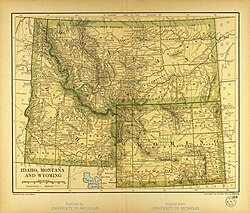
Montana’s historical migration patterns are a complex tapestry woven from Native American tribal movements, early fur trade expeditions, and successive waves of settlers lured by the promise of gold, farmland, and economic opportunity. The region’s strategic location at the crossroads of major river systems, coupled with federal initiatives such as the Homestead Acts, played an instrumental role in shaping the demographic landscape. Railroads facilitated rapid population influx, drawing diverse ethnic groups seeking prosperity in mining, agriculture, and emerging urban industries. Over time, global events—including political upheavals, economic downturns, and broader social trends—further influenced the routes and motivations of those who migrated to Montana. Each distinct era of migration left an indelible mark on the state’s social fabric, cultural heritage, and economic development, illustrating the enduring influence of these pathways on Montana’s evolution.
Research your ancestors on MyHeritage
List of Montana historical migration routesList of Montana historical migration routes
| Time Period | Ethnic Group | Origination Location | Arrival Location (within Montana) | Motivating Factors |
|---|---|---|---|---|
| Pre-1700s | Various Native American tribes (e.g., Crow, Blackfeet, Cheyenne) | Great Plains and Northern Rockies regions | River valleys and plains of present-day Montana | Seasonal buffalo hunts, territorial expansion, intertribal alliances and conflicts |
| Early 1800s (c. 1800–1850) | French Canadian and Métis fur trappers | Canada and Upper Midwest | Fur trading posts along the Missouri and Yellowstone Rivers | Fur trade economy (beaver pelts), establishment of trading outposts |
| 1850s–1860s | Euro-American settlers, including prospectors of diverse backgrounds | Eastern United States and Midwest | Gold fields near Bannack, Virginia City, and Helena | Gold rush and mining opportunities, adventure, possible quick wealth |
| 1860s–1870s | Irish and German immigrants | Eastern U.S. ports (after crossing the Atlantic), some from Canada | Developing mining camps (Butte, Helena) and small farming communities | Escape from political/economic hardship, mining and railroad jobs, farmland opportunities |
| 1870s–1880s | Chinese immigrants | Primarily coastal U.S. (California) and directly from China | Mining camps (e.g., Helena, Butte) and railroad construction sites | Economic opportunity in mining and railroad work, escape from political unrest in China |
| 1880s–1890s | Scandinavian (Norwegian, Swedish, Danish) settlers | Upper Midwest (Minnesota, Wisconsin), direct immigration from Northern Europe | Newly formed agricultural homesteads in central and eastern Montana | Homestead Act opportunities, railroad promotions, search for arable land |
| 1880s–1900s | German-Russians[1] | Black Sea region and Volga River areas (Russian Empire), via ports in the Eastern U.S. | Agricultural communities in eastern Montana (e.g., around Billings and the Hi-Line) | Homesteading under the Enlarged Homestead Act, desire for religious and economic freedom |
| 1890s–1910s | African American migrants | Southern states and border states (e.g., Missouri, Kansas) | Growing urban centers (Helena, Butte), railroad towns | Post–Reconstruction relocation, work opportunities in railroads, hotels, and service industries |
| 1900s–1920s | Homesteaders of diverse European backgrounds | Midwestern and Northeastern U.S., newly arrived European immigrants | Eastern Montana plains (the Hi-Line region), Great Falls area | Homestead Act expansion, cheap land, promotion by railroads and land speculators |
| 1930s–1940s | Dust Bowl migrants | Dakotas, Nebraska, Kansas, and other drought-affected areas | Various farming regions across Montana | Economic desperation, search for better farming conditions, government relief programs |
| 1950s–Present | Various domestic migrants and international arrivals | Across the United States; global origins | Urban centers (Billings, Bozeman, Missoula), oil fields in the east, and other economic hubs | Job opportunities (energy sector, tech, education), quality of life, outdoor recreation |

